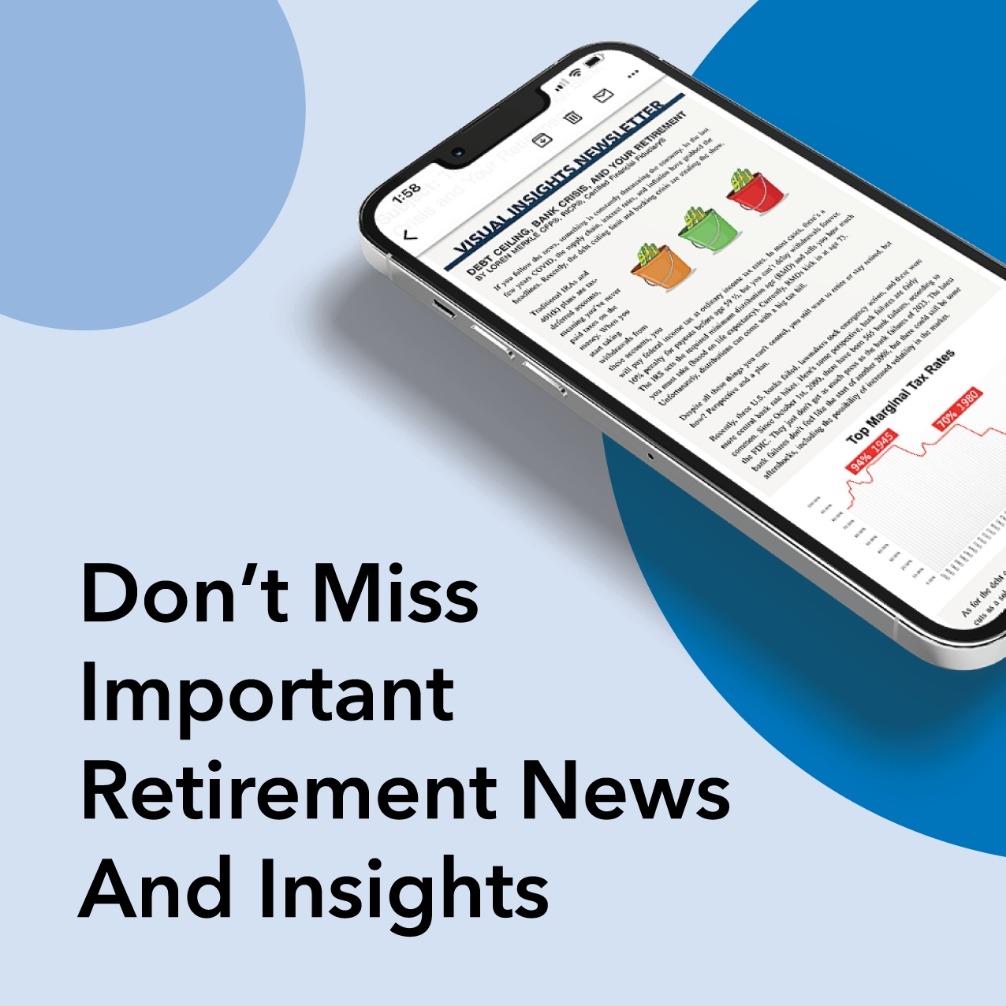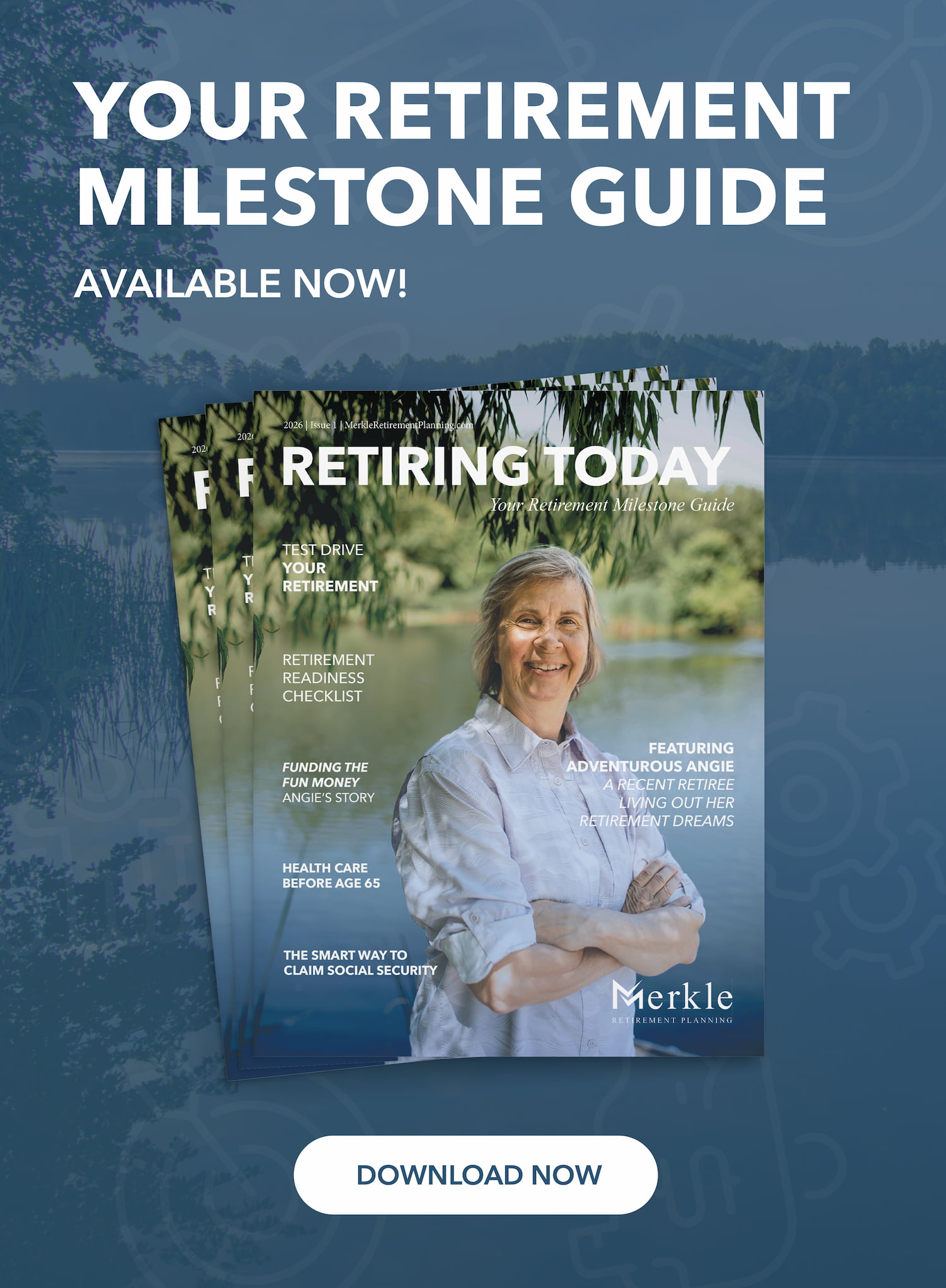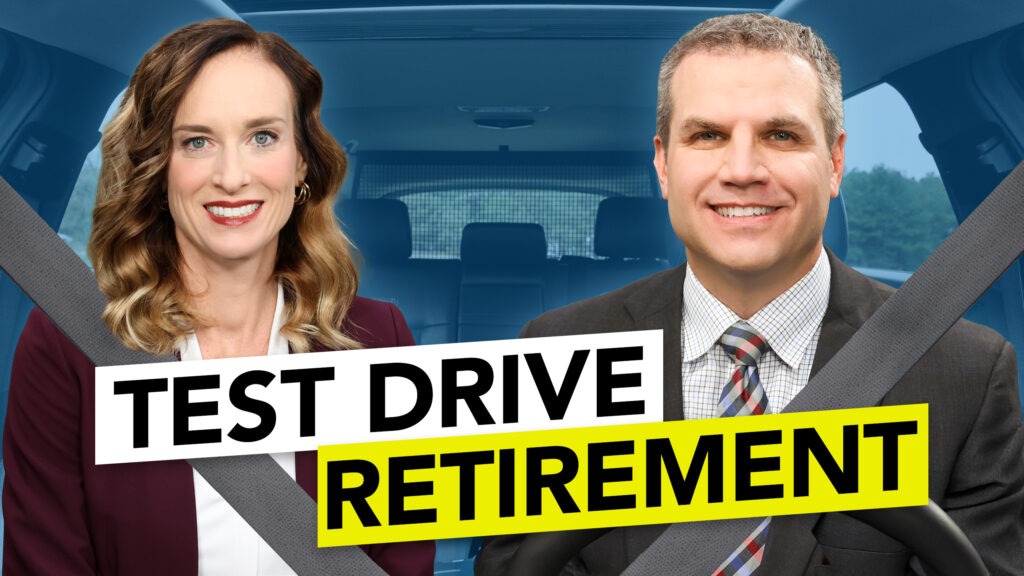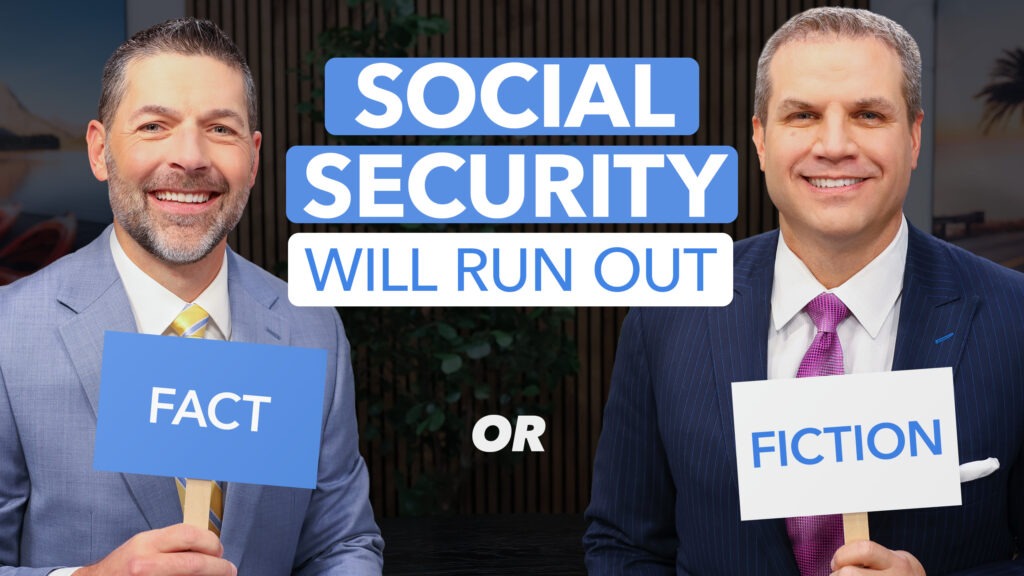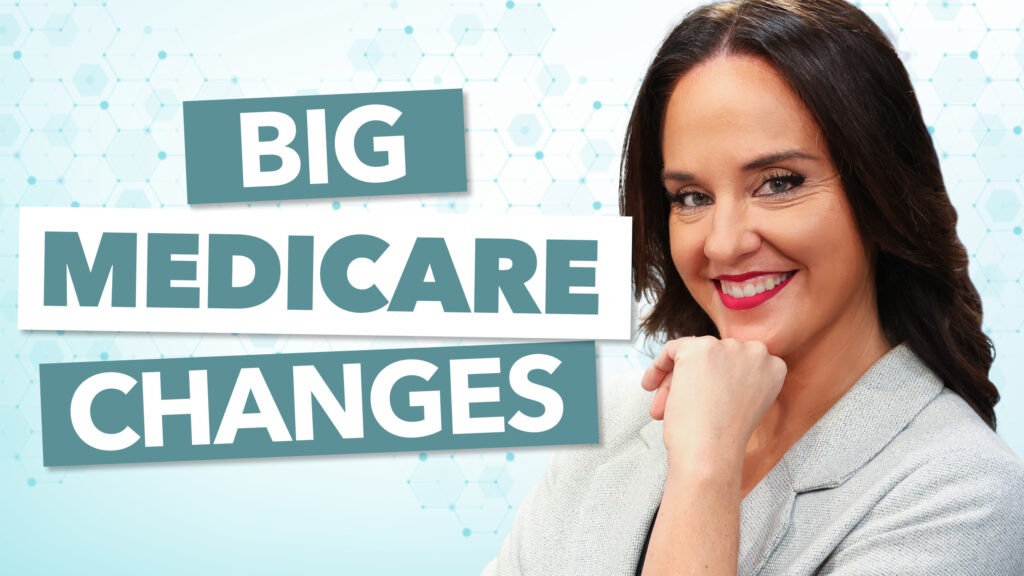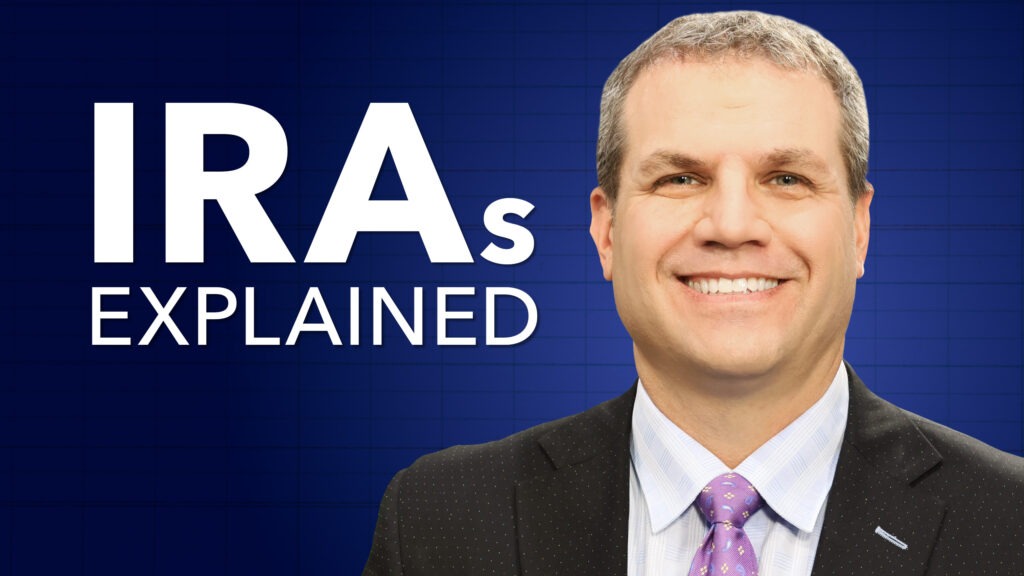In this episode of Retiring Today, Loren Merkle and AnnaMarie Morrow discuss the most critical Medicare updates that will help you make the best decisions for your retirement plan.
– Complete explanation of the $2000 out-of-pocket maximums for Medicare Part D
Key topics:
– A comprehensive breakdown of Medicare Parts A, B, C, and D
– IRMAA and its impact on your Medicare premiums
– Your Medicare options if you work past age 65
– The triple tax advantage of HSAs
–––––––––––––––––––––––––––––––––––––––––––––––––––––––––––––––––––––––––––––––––––––––––––––
TRANSCRIPT
Molly Nelson [00:00:05]:
2025 Medicare changes. We clear up confusion and help you understand how they impact you right now on Retiring Today. Hi, I’m Molly Nelson here with Loren Merkle and AnnaMarie Morrow. AnnaMarie is the Director of Medicare here at Merkle Retirement Planning, and Loren is a Certified Financial Fiduciary®, a CERTIFIED FINANCIAL PLANNER™, and a Retirement Income Certified Professional®. Medicare, there have been a lot of changes in the last couple of years, and AnnaMarie, quite frankly, it’s been a lot for people to take in, and some of it’s been pretty confusing.
AnnaMarie Morrow [00:00:34]:
And the Inflation Reduction Act, which was passed in 2022, rolled out these changes through the year 2029. And so we are experiencing and relaying the changes within the Inflation Reduction Act that affect Medicare, the components within Medicare, and there are some really big ones rolling out in 2025 that we’re going to dive into today.
Molly Nelson [00:00:53]:
Yeah, especially part D. That’s what we really want to focus on today. And these changes—you’ve been following them closely. Before we talk about the 2025 changes, let’s do a little refresher on some of these Medicare letters.
AnnaMarie Morrow [00:01:06]:
That’s a great place to start because that is the mass confusion that happens. You know, people are thinking, do I need a B? What is C and D? So let’s break it down. So, Medicare Part A is everything that takes place within a hospital. That’s your hospital coverage. And there’s typically not a monthly premium associated with that because as long as you or your spouse have worked the qualified number of quarters, you’ve already paid for it in taxes. So, there’s no premium associated with that once you enroll in part A. Now, part B is everything that takes place outside of the hospital. So these would be your doctor’s visits, your physical therapies.
AnnaMarie Morrow [00:01:43]:
This also includes, however, drugs administered within a hospital or clinic, like chemotherapies. Now, part B does have a monthly premium and this is based on income. Every year they do a two-year look back. But what’s important to note is that original Medicare, which is A and B, is offered to you by the federal government. So you’re going to get your Medicare card with A and B on it from the Department of Health and Human Services, or CMS, which is Centers for Medicaid and Medicare Services. And then the final two components are C and D, which are supplements, and your drug card. These are offered to you by private insurance carriers. So there’s the real major distinction is that Parts A and B are offered through the government and C and D are your supplements. Drugs are offered by private carriers.
Molly Nelson [00:02:31]:
I want to go back to B for just a moment because that’s the one that I know that you guys work together a lot on because that’s the one that’s income-based and people, that’s where people can really get surprised if they haven’t done some prior planning or at least looked forward. Because what you pay in 2025 for this is based on what you earned in 2023, is that right?
AnnaMarie Morrow [00:02:49]:
That’s correct. The first you enroll in part B, they will do a two-year look back. So, if your part B start date is in 2025, they’ll look back at 2023 to see what your modified adjusted gross income was. And that’s where we have some fun together. Loren, is that what we call that?
Loren Merkle [00:03:08]:
No, it is a lot of fun because we get to really put the pieces of their plan together in such a meaningful way. The income plan talks to the tax plan, and the income and the tax plan talk to the health care plan. Because yes, Part B premiums are based on the income, but part D premiums are also. So, if you have an IRMAA on your part B, your part D premiums could also be increased. So you’re paying more for Part B and D, which isn’t always necessary, and that two-year look back can be a part of that confusion and part of the increased premiums that people pay. Because if you’re above the IRMAA this year and you don’t know that, then it’s not going to be until two years that you actually realize you have to pay a higher premium on Part B and Part D because of two years previous. And if you are hired next year, then you won’t find that out until again two years from now.
Loren Merkle [00:04:02]:
So it can really be a steamroll effect where you pay higher this year, higher next year and then the third year you actually figure out what you did wrong and then you have course correct. Or you can create the RetireSecure Roadmap with AnnaMarie and then you know going into it how to avoid those IRMAA increase premium.
AnnaMarie Morrow [00:04:22]:
And what’s powerful about the planning we do together within all these pillars overlapping retirement is a life-changing event that triggers the option to file an appeal to have that increase lowered. And what’s great about the RetireSecure Roadmap is we know what your estimated income is going to be when you’re headed into retirement and having that information is a part of that appeal process. So it’s all in-house. We’re taking that holistic approach so that when you see that increase, it’s not something that immediately causes you to break out into a sweat.
Loren Merkle [00:04:55]:
And there’s many people that are not aware of the appeal, let alone how to go through that appeal process, which is another reason you’re so valuable for the families and individuals that we work with because you’re there to point out you do have the opportunity to appeal, but also to help them file it.
Molly Nelson [00:05:10]:
And this is a great reminder to me too, guys, that a lot of people that are watching this right now aren’t 65. They’re not Medicare beneficiaries or Medicare eligible right now. They’re maybe 57 and older, and 65 feels like a long way away. But there are things you can do right now to put yourself in a better position or at least have a better understanding of what’s coming with Medicare.
AnnaMarie Morrow [00:05:29]:
How often have we heard that? I wish we had started sooner.
Loren Merkle [00:05:32]:
I wish I would have known. Yeah. And if you could start planning in your late 50s or early 60s, prior to age 63, there are potentially some enhanced tax planning strategies that you can use. Be a little more aggressive on that because anything that you do in your late 50s prior to 63 won’t have an impact, a negative impact on the premiums for Medicare Part B and D. So some people choose to accelerate their tax plan prior to age 63. But you have to know that, and you have to know the strategies, and you have to know the why and the potential costs that go into that in order for you to have the confidence to get a little more aggressive on your tax plan early on.
Molly Nelson [00:06:10]:
Yeah, there’s some real value in planning ahead on a lot of these aspects of retirement. Let’s go back to that legislation. Some of the changes when I talk specifically AnnaMarie, about insulin, and then some of the out-of-pocket max.
AnnaMarie Morrow [00:06:21]:
Changes, part of the Inflation Reduction Act rolled over the course of the year, as was the first big one we saw, were vaccines being covered and also insulins being capped at a $35 copay as long as they were covered on your drug card. And so as the years roll on, we’re seeing these rollouts. And there’s a big one for 2025 where there is an implementation of a hard $2,000 out-of-pocket max on all drug cards. Whether it’s a standalone drug card or built into your advantage plan, there’s this hard $2,000 out-of-pocket max. And for the first time ever, we’re hearing from people it’s causing this R into their overall plans, where we’re getting feedback on why this is happening. Why are these changes happening within my plan?
Molly Nelson [00:07:06]:
Yeah. You’ve talked to a lot of people who watch us watch this show, watch Retiring Today, and they’ve come up to you and said, hey, here’s the changes I’m experiencing. And some of it’s been tough.
AnnaMarie Morrow [00:07:15]:
It has been. I was stopped at church. Why? And this gentleman approached me, and he was like, why? Why is my dental benefit rolling back? Why is my provider not contracting? Why am I experiencing a deductible on a drug card I haven’t had before? Why are these things happening and people are noticing? It hasn’t been that way years previously, but we are getting a sense and people are feeling the pressure with these inflation reduction act changes. Yeah.
Molly Nelson [00:07:42]:
And when you say $2,000 out-of-pocket max, first reaction will be great. There’s a maximum. Once I hit that, it’s good. But we know that the cost of drugs is not going down. We know that someone has to absorb these costs. And now we’re seeing where the costs are being absorbed a lot of times, not by the drug companies. The drug companies aren’t going to say, no, we’ll pay the extra. It’s going to the insurance companies who are passing it along to the premiums.
AnnaMarie Morrow [00:08:06]:
Exactly. And we’re going to roll back. It’s an onion of layers that we roll back to, see. Okay, now let’s take a look at this. Who is responsible for these costs, which we’ll dive into today.
Molly Nelson [00:08:16]:
We’ll continue talking about the impact of these Medicare changes and AnnaMarie will explain exactly why some of this is happening. But first, we want to answer a question we received recently during our online Journey to Retirement workshop in a section that we call Your Journey, Your Questions next.
Molly Nelson [00:08:33]:
Welcome back to Retiring Today. It’s time to answer a question that we received recently during our online Journey to Retirement Workshop. In a segment that we call Your Journey, Your Questions, here’s the question: what do I do about Medicare if I work past age 65? I’m here with Loren Merkle and AnnaMarie Morrow. She’s the Director of Medicare here at Merkle Retirement Planning. So I know that you know the answer.
AnnaMarie Morrow [00:08:53]:
There’s a lot of misconceptions about there because there’s so much mail that you are getting telling you if you don’t ENROLL at age 65, you are going to have penalty.
Molly Nelson [00:09:01]:
No one wants a penalty.
Loren Merkle [00:09:02]:
Nobody wants a penalty. And it’s not only the mail that causes the Confusion, but also your peers, whether it’s your siblings or maybe your parents are saying what they did, or co-workers, there’s a lot of information coming from a lot of different places.
AnnaMarie Morrow [00:09:15]:
That’s right. And so, but we’re here to break through that. Right?
Molly Nelson [00:09:19]:
Clear the confusion. All right.
AnnaMarie Morrow [00:09:20]:
And people are all the time working past age 65. And so if you are continuing to work or your spouse is continuing to work beyond the age of 65, or you’re aging into 65 and your spouse is younger than you and still working, you do not have to elect Medicare when you turn age 65. The only thing to consider is if there are less than 20 employees at the place of business, then you may need to elect Medicare. It’s important to know if the employer plan is considered Medicare qualified, meaning matching what Medicare covers. And then you can continue to work, you can be continued to be carried on to that plan until you’re ready for separation of service.
Molly Nelson [00:09:57]:
Are you talking about part A and part B? You don’t need to elect either. Either.
AnnaMarie Morrow [00:10:00]:
You don’t have to elect both at the same time. You can choose to elect part A when you turn age 65 because there’s no premium attached to it, but that doesn’t mean you have to elect part B. Now, there is one caveat that will guide you on whether to know if it’s a good idea or not to elect at age 65, and that is a health savings account. HSAs are growing in popularity because of the great tax benefits associated with it. But once you elect just part A, your contributions must stop.
Molly Nelson [00:10:29]:
Let’s talk about HSAs, because if they’re becoming more popular, I think people need to know about them and about the benefits.
Loren Merkle [00:10:34]:
They were started in 2003, but really, over the last decade, a lot of people have started to use them for a couple of different reasons. One is health care premiums. In traditional health care plans, the premiums have become more expensive and less affordable. So, the high deductible health care plans that are associated with HSAs, the premiums for those plans are less than most traditional health care plans. So that can be appealing. But also, by taking advantage of a qualified high deductible health care plan, you can take advantage of the triple tax benefits of the HSA, which means you put contributions into the HSA, you do not pay taxes on those contributions. Those contributions grow tax-free. And then when you take that income out and use it for qualified health care expenses, that comes to you tax free as well.
Loren Merkle [00:11:24]:
So the three tax benefits which we don’t see in hardly any other retirement savings. Which is why one effective strategy that you may consider if you’re taking advantage of the HSA is while you’re working, you have your great income and you have medical expenses. You may choose not to use the HSA for those medical expenses. Cash flow it through your earnings because when you retire and those earnings go away, you can use that HSA for those qualifying medical expenses when you don’t have the higher earnings that you have while you’re working. But at age 65, if you file for Medicare A, you’re not eligible to contribute to the HSA. And that’s one thing you really have to be careful of as you’re making this Medicare decision.
Molly Nelson [00:12:09]:
And you recently had a discussion with someone who’s 65 and had a child at home that was covered under their health care and; they had some questions about Medicare and what to do.
AnnaMarie Morrow [00:12:18]:
Yeah, Medicare is just an individual plan. So Medicare would not kick in and help cover any dependents that you may have in the household. So that’s something to consider. Maybe in that situation it would be wise to remain on the employer plan so your child or dependent can have that coverage. Coverage moving forward. But it is important to note, once you’re over the age of 65 and you do go to elect A or, or B, A and B, there is election period. Right. So in order to elect, you need to complete one extra form.
AnnaMarie Morrow [00:12:50]:
Not a lot of people are aware of this. You need to prove that you’ve had qualified coverage since you turned age 65. This is what bypasses that penalty. And this form is completed by the employer that was carrying your health coverage. And you can have them sign this within three months of when you plan to separate service or the employer plan.
Molly Nelson [00:13:10]:
And this is only if you’re working. If you’re retired, you don’t have to.
AnnaMarie Morrow [00:13:13]:
Worry about approving that it’s past age 65. If you’re working past age 65, then you do need this form to prove you’ve had qualified coverage.
Molly Nelson [00:13:21]:
Welcome back to Retiring Today. I’m Molly Nelson here with Loren Merkle and AnnaMarie Morrow. We’re talking about 2025 Medicare changes, Part D, $2,000 out-of-pocket max. So this is really changing how premiums are being covered and who’s paying for it.
AnnaMarie Morrow [00:13:35]:
That’s right. So let’s peel back this onion. So we’re going to pull up graphs on your screen right now which illustrate in 2024. The first graph we’re going to pull up is what happens once you hit your out-of-pocket maximum on your drug card. Who is paying that bill? 20% is the plan carrier who you are enrolled in that drug plan with. They are responsible for 20%, the government, the rest at 80%. Looking at 2025, implementing a $2,000 out-of-pocket max, who takes over? The pressure here is put on the plan carrier at 60%, 60% government, 20, drug manufacturers, 20. But you can see this big change here.
AnnaMarie Morrow [00:14:18]:
The main takeaway is starting in 2025, the pressure is put on the plan carrier to make up for that cost of these expensive prescription medications. And this is why we’re seeing a ripple effect into higher drug card premiums and different benefits being reduced or eliminated on the advantage plans.
Molly Nelson [00:14:39]:
Yeah, I’m going to say the pressure is put on the plan carrier. They have to pass on at least some of this cost. And that cost essentially is getting passed on to the policyholders or the people paying the premiums.
AnnaMarie Morrow [00:14:49]:
And some of the changes we’re seeing on drug cards, we saw a $5 a month premium go up to $40 a month advantage plans. This was that gentleman at church. He noticed his dental benefit was rolling back. Some providers are opting out. The big takeaway here is the annual enrollment period. This is when these changes are being released. And this is the opportunity to make sure that you are set up for success the following year on the plan that will still cover your needs. Because different advantage plan carriers are making different changes.
AnnaMarie Morrow [00:15:20]:
They’re not all changing the same way, the same benefits. And so that is so important to pay attention to. And then if you’re on a traditional med step with a standalone drug card, making sure those formularies are still covering the medications you need and be anticipating a higher monthly premium.
Loren Merkle [00:15:39]:
This is one of the big challenges with Medicare is unlike Social Security, where it says set it and forget it, there are a lot of Social Security legislative changes, but you can’t control it. You’ve already made your decision, and that’s what it is. Whereas with Medicare, legislative changes take place almost every single year. But it is incumbent upon you to understand what those changes are, the implications to you in your plan, but then also make the adjustments during annual enrollment to make sure that the following year you have the best plan in place. And it’s all confusing the first time you have to elect, but then throwing the changes and the additional options the next time you get to elect is a lot to take in.
Molly Nelson [00:16:17]:
You want to talk about a lot to take in. Our friend AnnaMarie Morrow here, she printed out some of these rules and regulations from our friends at the federal government.
Loren Merkle [00:16:24]:
Are you just going to read it right now?
Molly Nelson [00:16:25]:
Do you guys have a couple of…
Loren Merkle [00:16:27]:
We got plenty of time.
Molly Nelson [00:16:28]:
Yeah, you’re going to need a pillow. But you told us something interesting. You read this so we didn’t have to. Well, you probably read it too, knowing you, but I didn’t have to read it. But the changes are also going to be. You’re going to see maybe if you’re a couple and the male is going to pay something a little bit different than the female, or they used to, but now they’re leveling all of that out too. I thought that was really interesting.
AnnaMarie Morrow [00:16:49]:
So this is if you are enrolled in a standalone drug card and you have a traditional Medigap supplement. Typically, depending on the carrier, your premiums are based on a number of different factors. Men normally will pay more than women for monthly premium and it’s also based on age. So a 95-year-old pays more than a 65-year-old. Well, under the Inflation Reduction Act, there is a clause. We’ll pull that up on your screen here as well. Section 1557 prohibits discrimination on the basis of race, color, national origin, sex, age or disability. So essentially, what that means is, in theory, a 95-year-old man could have the same premium as a 65-year-old female.
AnnaMarie Morrow [00:17:35]:
Do prices come down? Not necessarily. Not typically. We don’t see that. But slowly, as these traditional Medigap carriers are rolling out these premiums, we are seeing significant increases to what those will look like in the upcoming year.
Molly Nelson [00:17:52]:
And what goes together with what you’re talking about in the annual enrollment period. And talking about these things and making changes is exactly what you’re doing With a RetireSecure Roadmap. You’re getting ahead of things. You’re not making an income decision the first day of retirement. You’re making a retirement income decision five, six, seven years before retirement. So you know what’s coming.
Loren Merkle [00:18:11]:
Yeah. Just like Medicare has not set it, forget it. Neither is your retirement plan your RetireSecure Roadmap, because it has to account for not only adjustments in Medicare changes, but in Social Security changes, but also in your life changes, because your life will consistently change as well. So it has to accurately reflect all of these changes and what your wishes are at that particular point in time to make sure you can still have the retirement that you want to have.
Molly Nelson [00:18:36]:
And I kind of feel like there’s no time like the present to start thinking about your retirement. So if you’re 57 or older, you’ve been dreaming about a future retirement. There are things you can do right now to put yourself in a better position. It might feel like a long way away, but once you watch the online Journey to Retirement Workshop, you’ll see what you can do. This is Retiring Today, and we thank you for watching.
–––
We are an independent financial services firm helping individuals create retirement strategies using a variety of investment and insurance products to custom suit their needs and objectives. The content and examples shared are for informational purposes only and should not be construed as investment advice or serve as the sole basis for making financial decisions. Individuals are encouraged to consult with a qualified professional before making any decisions about their personal financial situation. Our firm is not permitted to offer legal advice. Investment Advisory Services offered through Elite Retirement Planning, LLC. Insurance Services offered through MRP Insurance, LLC.
Medicare services provided through MRP Insurance, LLC. Any and all other services related to insurance are an outside business activity and are not offered through or supervised by Elite Retirement Planning, LLC. MRP Insurance, LLC, is not affiliated with or endorsed by any government agency. This is an advertisement for insurance. By responding to the ad, you will be put in contact with a licensed insurance agent offering Medicare Advantage Plans, Medicare Supplement Plans, and Prescription Drug Plans. We do not offer every plan available in your area. Currently we represent [5] organizations which offer [22] products in your area. Please contact Medicare.gov, 1-800-MEDICARE, or your local State Health Insurance Program (SHIP) to get information on all of your options.

